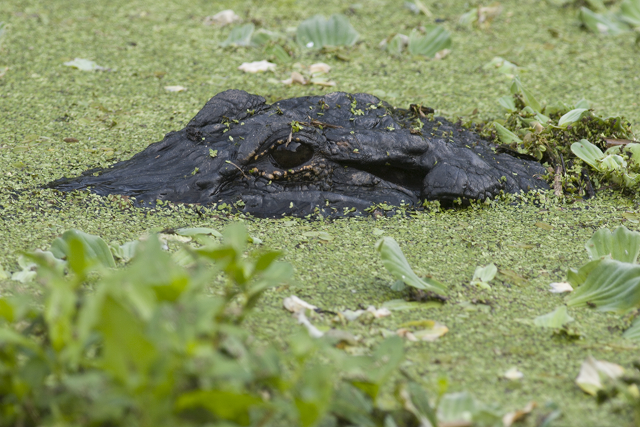Algal blooms are found on waterways throughout Florida. That includes Lake Okeechobee, the St. Lucie and Caloosahatche estuaries, the Indian River Lagoon, the St. Johns River, Biscayne Bay, Florida Bay, Apalachicola Bay, and others. As these blooms grow, they negatively impact the environment, public health, and economy of nearby communities. In short, they become harmful algal blooms (HABs).
UF/IFAS phycology researchers are working to identify and address the impact of HABs across Florida. Phycology is the scientific discipline that studies algae. In addition, statewide scientists with expertise in various disciplines are collaborating to better understand the true scope of HABs. That includes members of the Blue-Green Task Force and industry experts from the Florida Fish and Wildlife Conservation Commission. Through the Florida Sea Grant program, UF/IFAS teams with 17 Florida universities to explore and address this ongoing problem.
Causes of Harmful Algal Blooms

While this alligator (at the Alachua Sink on Payne's Prairie) is amid harmless aquatic vegetation, HABs can negatively impact the health of wildlife and humans | UF/IFAS photo
Scientists believe large algal blooms in Florida started from natural causes, but have been made worse by human impact on the environment. This has occurred primarily through addition to the land of excess nutrients (mainly nitrogen and phosphorus). Another impact is land-use decisions that permit nutrients to more quickly reach inland and coastal waters.
Climate change also plays a role. For instance, rising water temperatures and sea levels have enabled faster-growing algae. In addition, saltwater intrusion encourages saltwater blooms to move closer to shore.
Potential Solutions
Knowing the dangers of HABs is just the beginning. To reverse current spread (and prevent future blooms), it's necessary to engage in research, collaboration, and daily vigilance. Answering that call, UF/IFAS leadership has assembled a core team of both research and extension faculty who work to uncover comprehensive data regarding algae species, key toxins, and human exposure. These professionals work in collaboration with state-wide organizations and individuals.
In addition, UF/IFAS Extension engages the public through on-site information and discussion forums in every Florida county. Meanwhile, the University of Florida teams with individuals and organizations throughout the state. That includes water management districts, state and federal agencies, local governments, agricultural commodity groups, private industry, and Florida residents.

